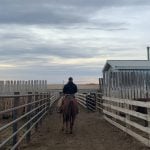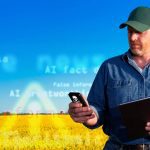Eyestrain and human fatigue are becoming synonymous with operating just about any modern farm implement.
The operator must continually monitor a wide range of factors: GPS and steering; the agricultural field task and the performance and function of the machine. As implement engineers devise more ways to feed more information to the operator, the human at the controls can start to feel like a character in a high-speed video game.
There’s really no getting around this situation. Better information does, in fact, let the operator make the fine-tuning adjustments that are necessary to make the most from expensive equipment. The operator must know if a seed run is plugged, fan speed has dropped on the air cart, an anhydrous line has burst or sprayer pressure is wrong.
Read Also

VIDEO: Green Lightning and Nytro Ag win sustainability innovation award
Nytro Ag Corp and Green Lightning recieved an innovation award at Ag in Motion 2025 for the Green Lightning Nitrogen Machine, which converts atmospheric nitrogen into a plant-usable form.
The list of functions to monitor is long and complex. Even the most well designed screen display can be intimidating and exhausting.
It’s all part of making the farm more efficient and all points to the fact that those who drive modern farm implements are much more than drivers. It’s not uncommon to hear a producer say that he’s pushed to the limit trying to keep up with everything going on in the cab.
GPS guidance has helped. As long as the machine is travelling on a path under GPS control, the operator has time to run through the range of monitors and sensors. However, the responsibility still sits firmly on the shoulders of the operator.
What if there was a way for the operator to continuously receive readouts on the implement’s six highest priority functions? Even within this select group of functions, priorities could be programmed so the operator instantly sees a crucial change at the moment it happens.
Putting real-time information right before your eyes is what the engineers at Smucker Manufacturing had in mind when they embarked on their latest project, which they call
AgriVue.
AgriVue is a small, transparent screen that mounts to a hat visor. The operator can program the screen to display whatever readouts he wants to see. Although most operators would opt to install only high priority field information, it’s not out of the question to install baseball scores or instantaneous market reports.
Smucker, which builds and markets the Hemisphere GPS and LandMark II systems for agriculture, has joined forces with a leading display screen company called Motion Research Corp., which developed and patented display technology called Heads Up Display, or HUD. Smucker is adapting it for agricultural use.
Motion Research put its first HUD on the market about a year ago. It’s a motorcycle helmet called SportVue that gives the rider real-time readouts on speed, gear, rpm and engine temperature. It can also be programmed to give top priority to the radar detector. The motorcycle SportVue costs $349 US.
Skydivers also benefit from the HUD, with an altimeter programmed into the helmet display screen. With real-time altitude data on display in their peripheral vision, divers can watch where they’re going without the constant and distracting need to focus the eyes on a wristband altimeter.
“For agricultural purposes, this breakthrough frees the operator from distracting glances at the light bar displays on current guidance systems,” said Kristan Dobson of Motion Research.
“It transmits critical data in low light and bright light and is perfect for noisy environments. More importantly, it is lightweight, compact and affordable compared to current light bar displays.”
Dobson said the projected image is similar to a hologram.
“It projects your data just above your natural sight line. It’s focused out to infinity so there’s no need to deliberately glance at it ever. Whether you look out over the hood of your tractor or look out to the horizon, it’s always in focus with no strain to your eyes. There’s no distraction.”
Dobson thinks AgriVue has the potential to be a powerful safety tool for people working around liquid slurry tanks and other situations where they need instantaneous warning when sensors detect toxic fumes or other life-threatening hazards.
There are no wires to restrict operator movement. The HUD personal screen has a receiver that picks up signals from the computer. The screens display only one item of data at a time so it doesn’t visually confuse the operator.
“The uses for Heads Up Display are as limitless as the capabilities of your computer,” Dobson said.
“If your computer can generate the information, then we can display it in AgriVue or SportVue or any other HUD type of kind of application.”
She said the transmitter plugs into any computer device with a USB port.
Motion Research sells the display technology as a developer kit to companies such as Smucker, which then adapt it to the needs of specific customers.
Dobson said the company is working on other applications such as guidance systems for construction, emergency response, law enforcement, military, measurement and monitoring systems in manufacturing, and general communication systems such as instant messaging and pager networks.
The AgriVue HUD is expected to be available this year.
For more information, visit www.motionresearch.com.















